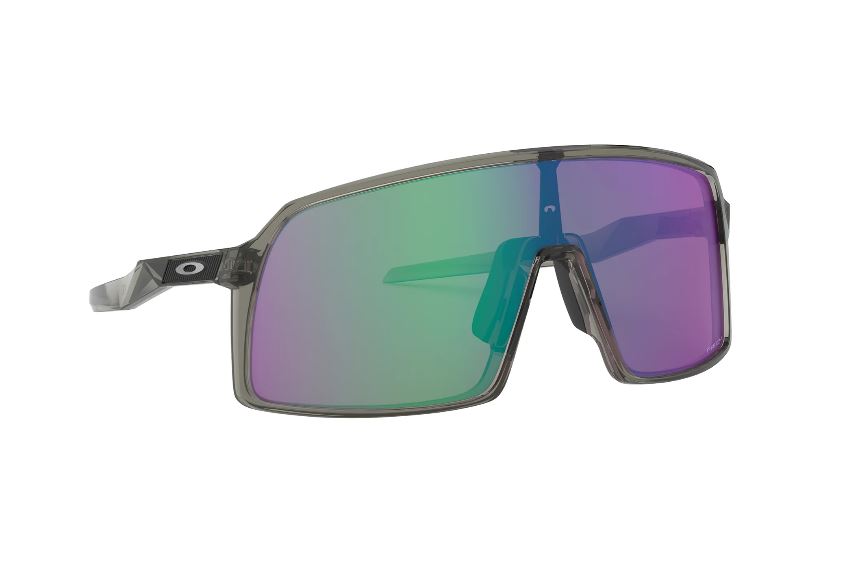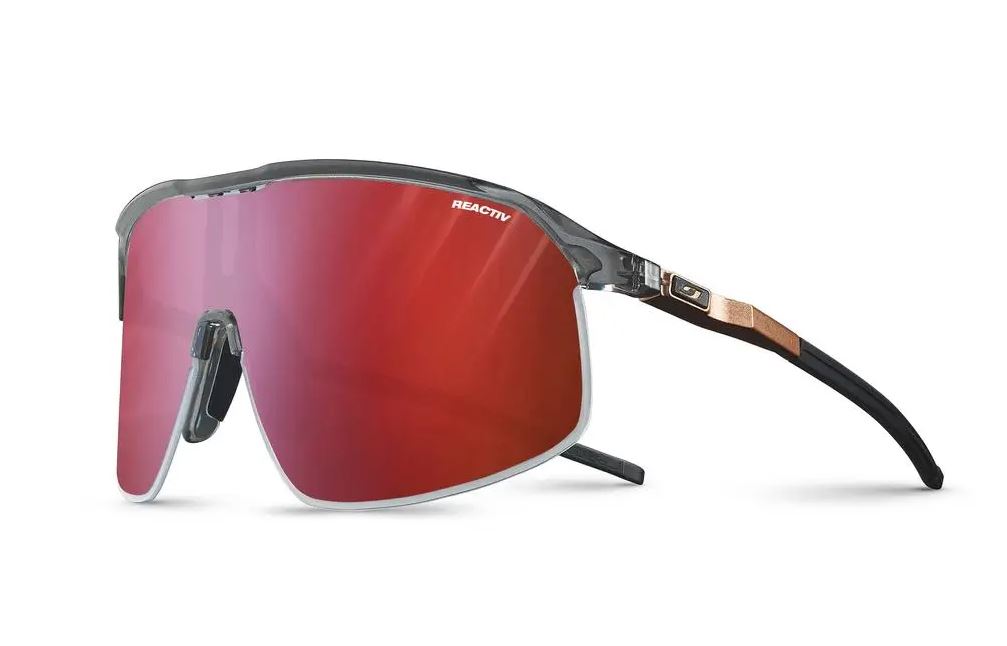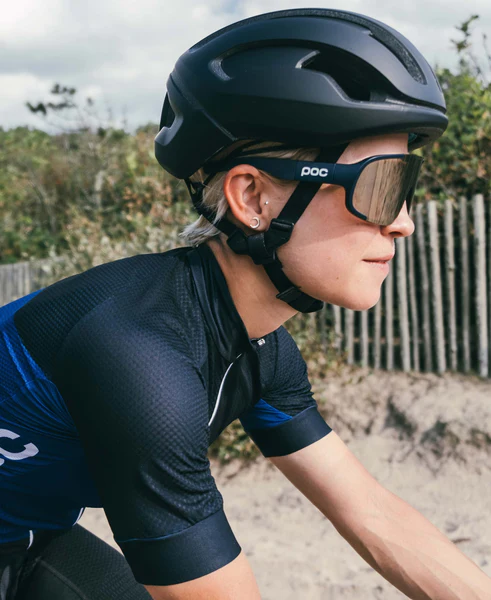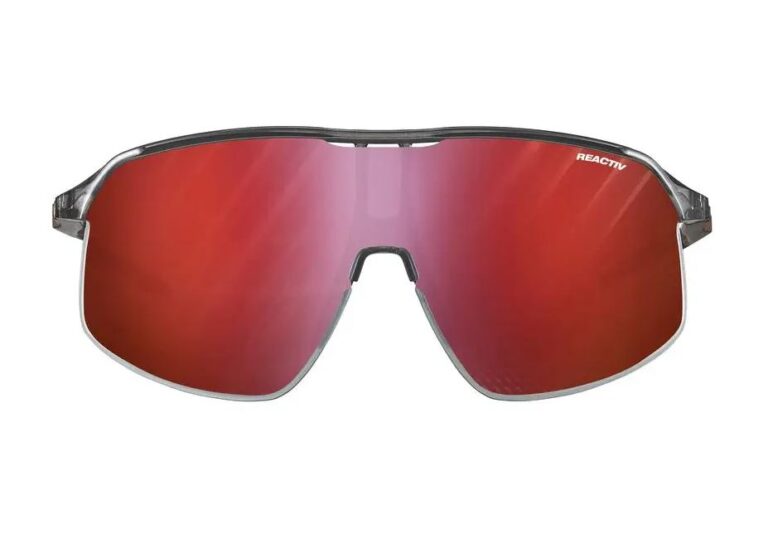Seeing Clearly: The Benefits of Photochromic Bike Glasses

Key Point Summary of The Benefits of Photochromic Bike Glasses:
- Adaptive Visibility: Automatically adjust to light conditions, ensuring optimal visibility at all times.
- Protection: Offer comprehensive protection against UV rays and debris.
- Convenience: Eliminate the need for multiple pairs of glasses for different lighting.
- Comfort: Reduce eye strain and enhance riding comfort in varying light conditions.
- Durability: Built to withstand the rigors of outdoor cycling.
Navigating the diverse landscapes of mountain biking, the unpredictable terrains of gravel, and the competitive circuits of cyclocross has equipped me with a broad perspective on the essentials of cycling gear. Among the various pieces of equipment that have significantly enhanced my riding experience, photochromic bike glasses stand out for their versatility and protection. Tailored for cyclists at beginner to mid-level experience, this article delves into the advantages of incorporating light-adaptive lenses into your cycling arsenal.
Unveiling the Advantages of Photochromic Bike Glasses
Adaptive Visibility for Every Trail
The core feature of photochromic bike glasses, their light-adaptive lenses, cannot be overstated. Transitioning seamlessly from clear to tinted as the outdoor light intensity changes, these glasses provide the perfect balance of shade and clarity without any manual adjustment. This feature is especially beneficial during long rides that span from dawn till dusk, where light conditions can vary dramatically. The convenience of not having to stop and swap out lenses allows for uninterrupted focus on the trail or road ahead.

Comprehensive Protection That Travels with You
Beyond their adaptability, photochromic glasses serve a critical function in protecting the eyes from the elements. Whether it’s the glaring sun at high noon or the low visibility of an overcast day, these glasses ensure continuous protection against harmful UV rays. Additionally, they shield the eyes from wind, dust, and flying debris, which are common in off-road adventures and high-speed descents. This level of protection is indispensable for maintaining clear vision and preventing eye injuries, allowing cyclists to navigate safely in various conditions.
Convenience and Versatility on the Go
One of the most practical benefits of photochromic bike glasses is their inherent convenience. The need for multiple pairs of glasses or interchangeable lenses is eliminated, as these glasses adapt to the lighting without any effort from the rider. This versatility makes them a preferred choice for cyclists who enjoy exploring different environments, from the shaded paths of wooded trails to the bright expanse of open roads. The simplicity of having one pair of glasses that covers a wide range of lighting conditions cannot be overstated.

Enhanced Comfort Across Distances
Eye strain and discomfort can quickly turn a pleasant ride into a challenging ordeal. Photochromic lenses mitigate these issues by providing consistent visibility and reducing glare, which in turn minimizes eye strain. The ability of the lenses to adjust to the lighting means that the eyes are not constantly adjusting to varying levels of brightness, leading to a more comfortable and enjoyable ride. This aspect is particularly appreciated during endurance rides, where comfort becomes as critical as physical stamina.
Durability for the Dedicated Cyclist
Cyclists who regularly embrace the outdoors require gear that can keep pace with their adventures. Photochromic bike glasses are designed with durability in mind, capable of withstanding the physical demands of cycling. The technology behind the adaptive lenses is robust, ensuring that the glasses remain effective over time, even with frequent exposure to sunlight and changing temperatures. This makes them a wise investment for cyclists who value reliability and longevity in their equipment.
The Benefits of Photochromic Bike Glasses: A Clear Path Forward
Embracing photochromic bike glasses has been a transformative experience in my cycling journey, offering a blend of visibility, protection, and convenience that traditional sunglasses cannot match. For cyclists venturing into the sport or looking to elevate their riding experience, these glasses represent a smart investment in both performance and safety. The freedom to ride without being hindered by changing light conditions or concerns about eye protection allows cyclists to focus on what truly matters: the joy of the ride.
In conclusion, the dynamic nature of outdoor cycling demands gear that is equally adaptable. Photochromic bike glasses meet this need, ensuring that cyclists are prepared for whatever conditions the road or trail may present. As the cycling landscape continues to evolve, so too does the technology designed to enhance our experience. In choosing photochromic glasses, cyclists are not just equipping themselves for the current ride but for the many adventures that lie ahead, with the assurance of optimal visibility and protection every step of the way.

Several brands and models consistently receive high praise for their quality, durability, and the effectiveness of their photochromic technology, here are a few standout options:
- Oakley Jawbreaker Photochromic: Oakley is a leader in sports optics, and the Jawbreaker model with photochromic lenses is a favorite among cyclists. These glasses offer a wide field of vision, excellent coverage, and Oakley’s proven lens technology that adjusts to changing light conditions. They also feature a secure fit and ventilation to prevent fogging.
- Tifosi Optics Crit or Alliant Photochromic: Tifosi is known for offering high-quality, affordable sports eyewear. The Crit and Alliant models with photochromic lenses are designed for cyclists, providing good coverage, lightweight frames, and lenses that adjust quickly to changing light conditions. They also come with hydrophilic rubber on the nose and temples for a no-slip fit.
- Julbo Aero / Aerolite with Zebra Light Lenses: Julbo’s Aero and Aerolite models are designed for endurance athletes and come equipped with their Zebra Light photochromic lenses. These lenses are exceptional in a wide range of light conditions, from low light to bright sunlight. The Aerolite is a slightly smaller version of the Aero, catering to those with smaller face shapes. Both models are highly ventilated to prevent fogging.
- 100% S2 Photochromic: The 100% S2 glasses are popular in the professional cycling circuit. They offer a retro-inspired design with modern technology, including photochromic lenses that adapt to varying light conditions. The lens provides 100% UV protection, clarity, and durability, making it suitable for serious cyclists.
- Smith Optics Attack Max Photochromic: Smith Optics Attack Max glasses feature a larger lens for increased coverage and protection. Their photochromic lenses adjust to light conditions, and the frame includes a two-position adjustable nose piece for a custom fit. The lens interchange system allows for easy swaps, though the photochromic lens itself adapts well across conditions.
When choosing photochromic bike glasses, consider the typical environments you ride in and any specific needs you may have, such as prescription compatibility or particular fit requirements. Additionally, check recent reviews and product updates, as manufacturers continuously refine their offerings to meet the evolving needs of cyclists.
FAQ
What is the advantage of using photochromic glass?
Photochromic glasses automatically adjust their tint based on light conditions, providing optimal visibility and protection from UV rays in both indoor and outdoor environments without the need to switch glasses.
What are the benefits of cycling glasses?
Cycling glasses protect the eyes from harmful UV rays, wind, dust, and debris. They enhance visibility, reduce glare, and can improve contrast, making for a safer and more comfortable ride.
What is the disadvantage of photochromic glass?
The main disadvantage is their slower response time to changing light conditions, especially in cold weather, which can temporarily affect their ability to provide optimal visibility. Additionally, they may not darken fully inside cars due to UV blocking windshields.
Are photochromic lenses good for sports?
Yes, photochromic lenses are good for sports, especially outdoor activities that involve varying light conditions. They provide continuous eye protection, adapt to changing light, and eliminate the need for multiple pairs of glasses, making them highly versatile for athletes.
Ride On
John





